Simply put, Japanese maple bonsai is breathtaking.
I’d argue that they’re even more head-turning than full-size ones growing in the ground.
The right pot and a well-pruned shape highlight the characteristically dramatic leaves and color.
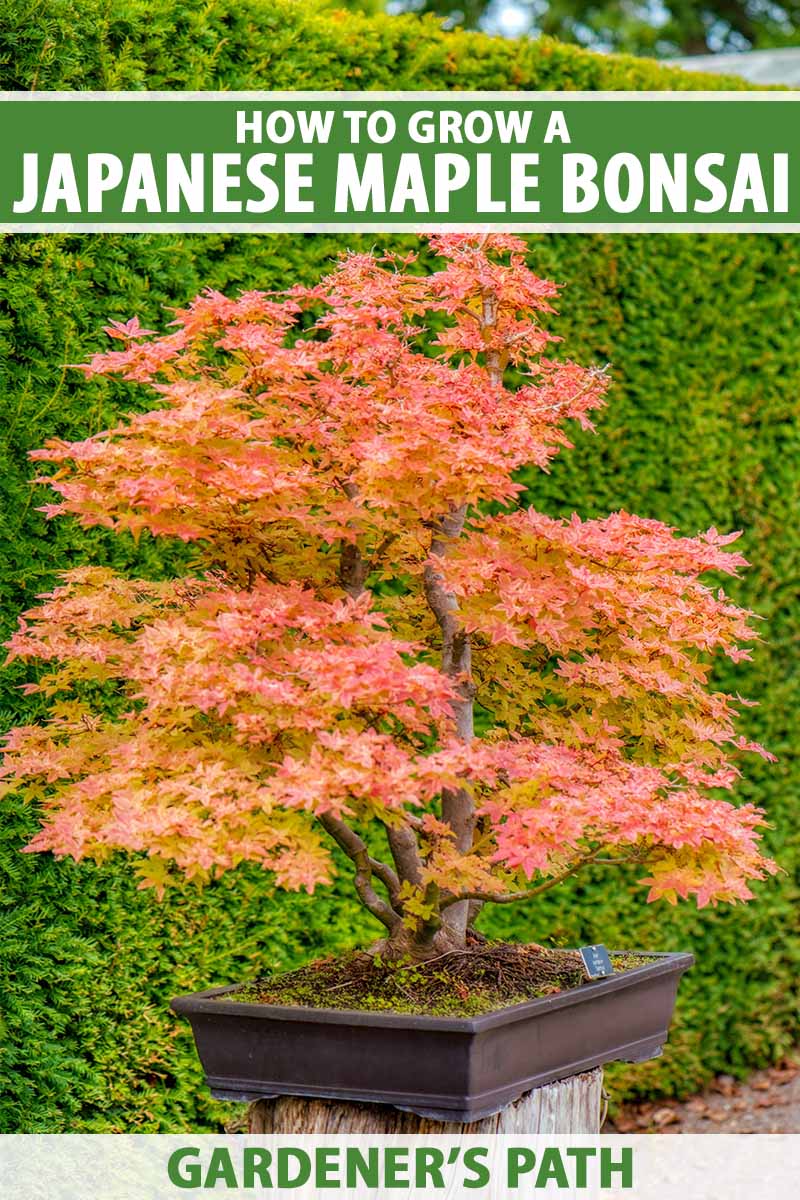
We link to vendors to help you find relevant products. If you buy from one of our links, we may earn a commission.
Other species are lovely in bonsai as well, but Japanese maples offer a lot in terms of versatility.
There are numerous colors in the red, orange, green, and even the purple end of the spectrum to choose from.
Add to that the various growth habits and leaf shapes and sizes out there, and you’re pretty spoiled for choice.
As much as I love an evergreen bonsai, there’s something even more contemplative about watching your tree change through the seasons.
You find that even a bare trunk and stems covered in fresh snow can be just as beautiful as a tree covered in fall foliage.
Whether this is your first attempt at bonsai in general, or your first try with this type in particular, this guide will help to demystify the process. We’ll chat about the following topics:
What You’ll Learn
Japanese maples are a classic choice for bonsai, but they aren’t the easiest option to cultivate.
The first thing to know is that these must be kept outdoors full time. You can bring them inside for a week or so if you want, but the rest of the time they must be grown outside, experiencing the changing seasons and varying weather.
In other words, these aren’t houseplants.
Setting Up Your Container
There are a bazillion options when it comes to bonsai containers. It largely comes down to your preference in choosing a color and shape.
The recommended size is determined by the size of the plant you’re starting with.
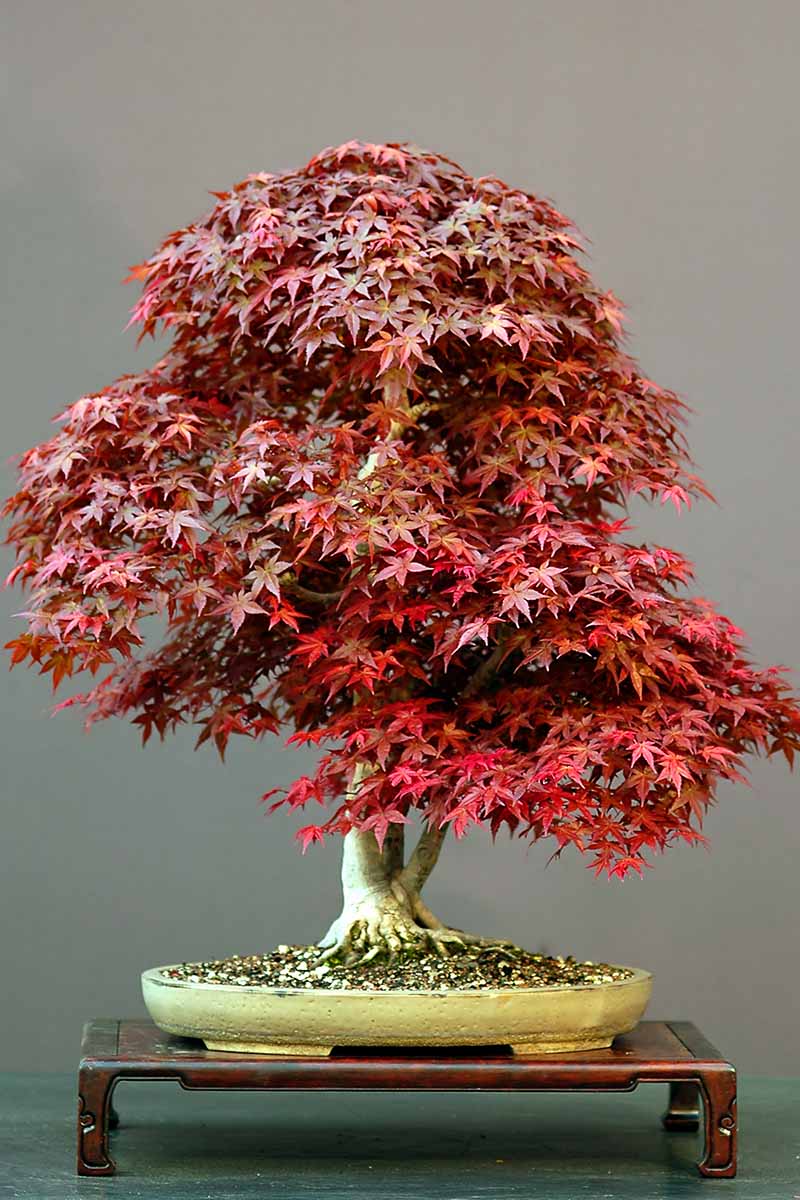
A young seedling will go in a six-inch pot. Once it’s become quite rootbound, you can go up an inch.
Keep doing this until you repot into whatever size container you’d like your specimen to stay in permanently. Then, it’s a matter of keeping the roots trimmed so the tree can stay in that container.
You can’t go wrong with a red oval-shaped vessel for a green-leafed tree, or light blue for a red tree.
Bonsai Boy carries classic light blue rectangular pots measuring six by four inches on the inside that are perfect for beginning trees.
Repotting should happen in the early spring when the tree is just starting to bud.
If you bought a seedling that hasn’t already been prepped for growth as bonsai, you’ll need to remove it from its nursery container and get rid of all the dirt. Brush it away and then rinse the roots clean.
Trim off any dead or damaged roots, and reduce the total volume of the roots by up to a third to ensure that the tree fits in your chosen pot.
If your bonsai pot doesn’t have a drain screen, put that in place now.
You can make your own by cutting some window screen, or buy a pack of 150 planter screens at Amazon.
Finally, place the tree in the pot and fill in around it with your substrate. You can purchase pre-made mixes or make your own.
A mix of 50 percent akadama clay, 30 percent lava rock, and 20 percent finely shredded pine bark works nicely, and our guide to bonsai soil explains all the details.
Water Wisely
Watering bonsai takes a bit more care than watering any other container plant – and Japanese maples take even more care.
These trees have shallow roots, though their natural root structure is altered when they’re kept in pots.
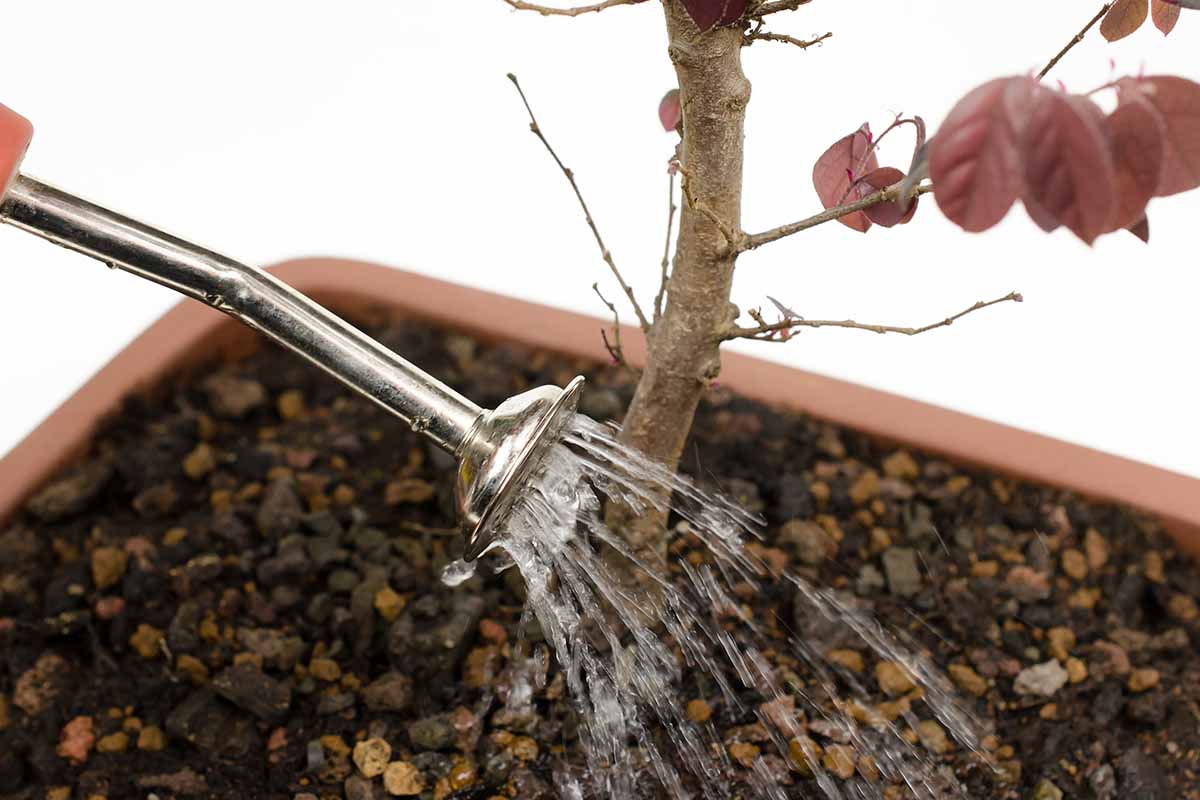
To ensure that they receive the water they need, you must flood the pot. That’s because the water first runs to the outside of the pot and then out through the drainage holes.
The roots won’t be able to access enough water unless you either bottom water by submerging the pot, or fill it until the entire substrate is wet up to the trunk.
Frequency depends on a variety of factors– the age of your plant, the level of sun exposure, how rootbound it is, your climate, the time of year, how much rain you’ve received, and the type of substrate you’re using.
You want to aim to keep the substrate moist but not too wet.
As you gain experience, you’ll be able to look at the color of the substrate and know right away that it’s time to add more water. But until then, use your finger to touch the soil and check the moisture level.
If the surface feels dry to the touch, it’s probably time to add water. You’ll water less, if at all, during the winter. And to help retain water, you can plant green moss on the top of the substrate.
Keep an Eye on the Sun
As we mentioned, you can’t keep a Japanese maple bonsai indoors. You could bring it in for a few days to display it, but otherwise, it needs to live out in the elements like any other outdoor tree.
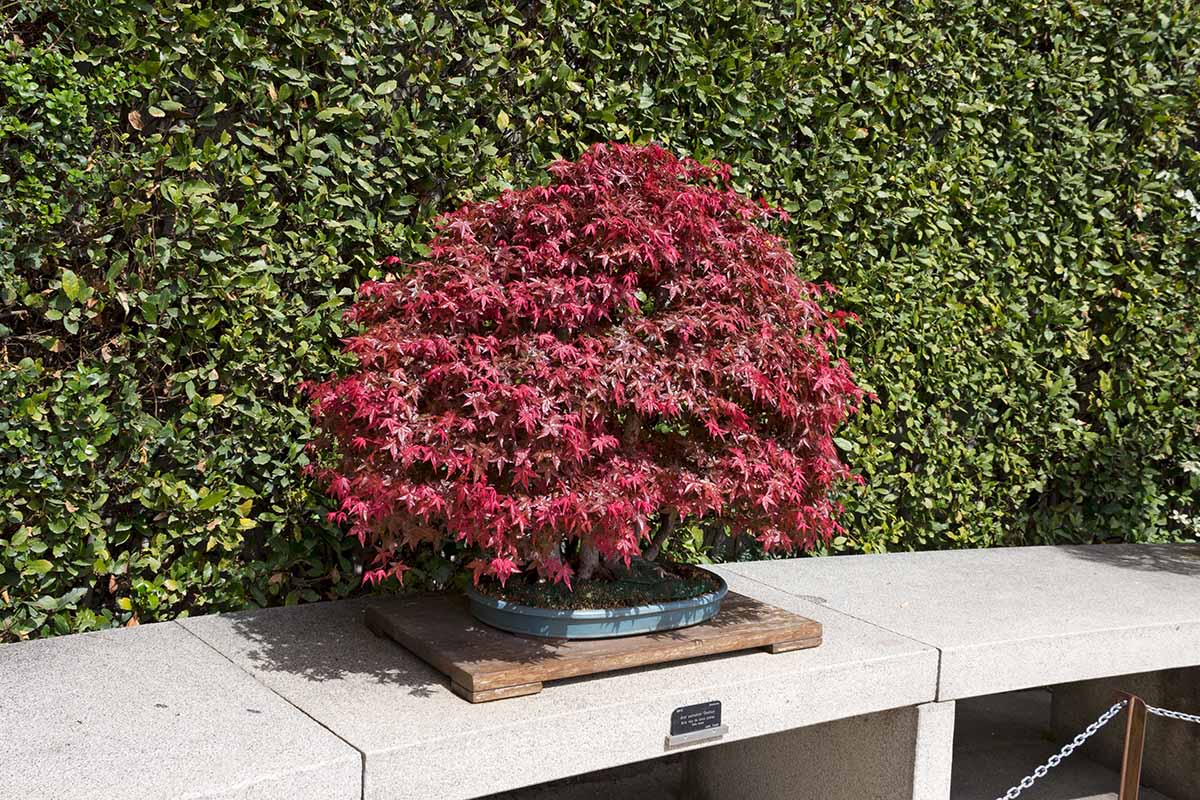
Partial shade is ideal, though some do fine with full sun so long as they’re protected on hot summer afternoons.
You’ll know the plant isn’t receiving enough light if it stops growing. Leaves that look dry and yellow or brown can be a sign of too much sun.
Pruning
Bonsai pruning is an art form and entire books and courses have been dedicated to teaching the methods involved.
In a nutshell, the goal is to make the tree look like a natural specimen untouched by human hands, in miniature.
Trees can look like they were molded by nature, of course.
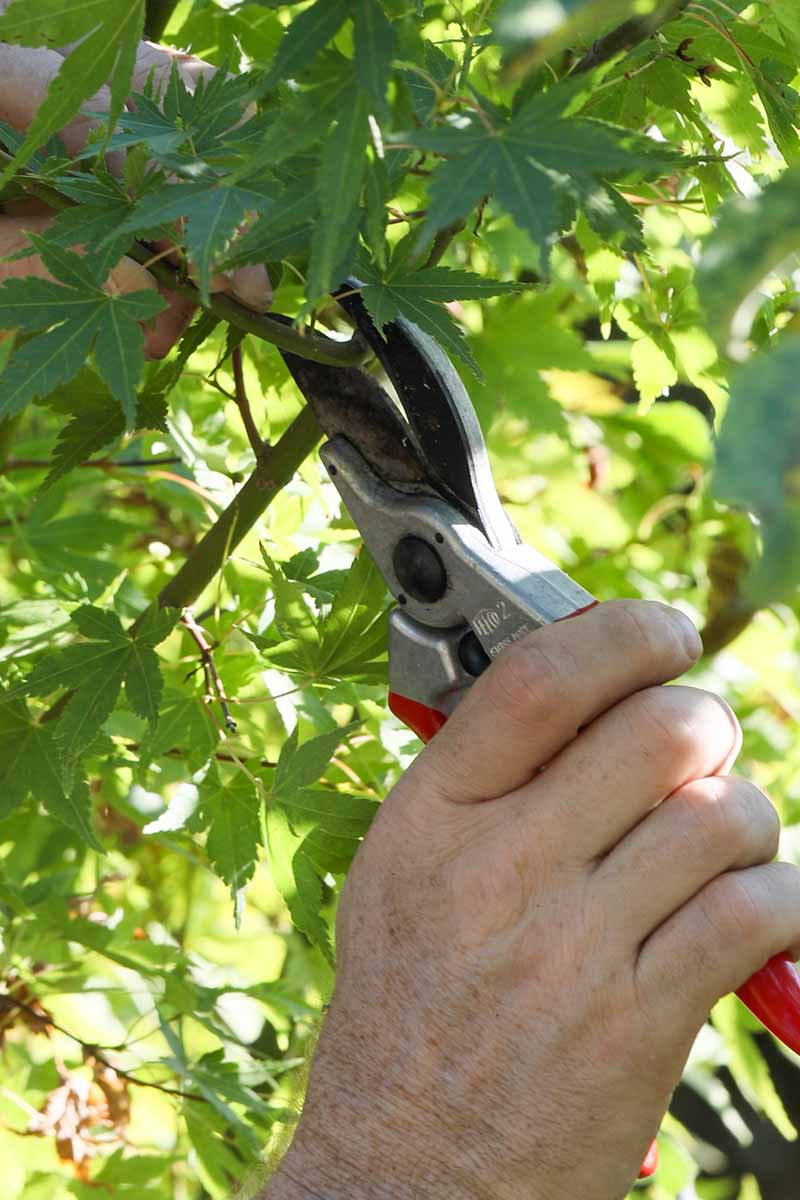
Windswept trees, ones growing in a weeping style out of a craggy rock face, and even trees with dead sections, are all commonly recreated by bonsai artists.
In general, you want to remove any growth that looks sick, is broken, or crosses other branches.
You should also remove any growth that ruins the appearance that you’re trying to achieve. For a full run-down, check out our guide to pruning Japanese maples.
Care Tips
You need to either upgrade the pot size every three years or so, or completely change out the substrate. Over time, substrates tend to compact and become entirely devoid of nutrients.
While our guide to growing your first bonsai explains the process in more detail, you’ll essentially need to remove the plant, remove the substrate, and prune the roots.
Then, you can repot in a container of the same size or a pot that’s one size larger.
Speaking of nutrients, fertilizing is vital. With so little substrate to hold nutrients, you need to supply all of their food and add more on a regular basis.
To make things easier, we’ve laid out the whole process in our article on fertilizing.
Finally, don’t forget to rotate your tree. While all bonsai has an ideal viewing perspective, you don’t want a lopsided tree.
Give it a turn now and then. I always go clockwise so I don’t forget which way I’m going, but you do you.
Cultivars to Select
Literally any type of Japanese maple can be made into bonsai.
Plants with naturally tight internodes (that’s the space between the leaf nodes) tend to work best simply because they look better than a leggy bonsai with just a few leaves.
Red lace leaf types are the most challenging. Beginners often stick with the A. palmatum species because this is the plant most often used as rootstock for hybrids, and it has hardy, reliable roots.
Start with this if you want to take the cautious route – you can venture into cultivars later, and finally hybrids.
You’ll know you’re a master once you’ve managed to get a red lace leaf hybrid to thrive.
Having said that, there are several options out there that can serve as a good place for beginners to start. Here are a few of the best:
Deshojo
‘Deshojo’ is an A. palmatum cultivar with densely-packed branches.
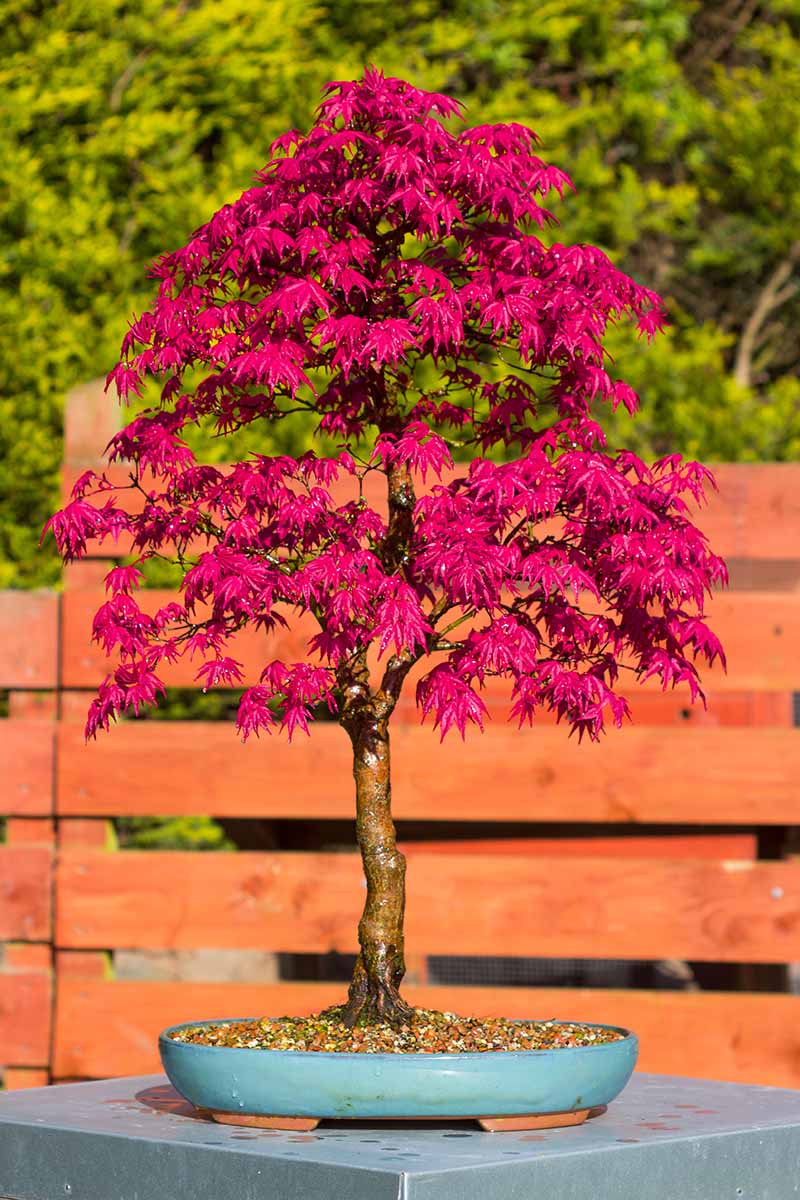
It’s also small, staying below nine feet tall in standard cultivation. It has striking red foliage.
Goshiki Kotohime
This A. palmatum cultivar can be hard to find, but if you see it, grab one. And nab one for me, too!
It has a dense growth habit with tiny green leaves that layer on top of each other like roofing shingles.
It’s also a slow grower that takes nearly two decades to mature. And it stays under five feet even once it does in standard cultivation – practically a natural bonsai!
Katsura
A. palmatum ‘Katsura’ has small greenish-yellow leaves with orangish-red margins.

It can grow up to 25 feet tall when it’s planted in the ground, but it’s a slow grower. It has an upright growth habit and leafs out early in the year.
Murasaki Kiyohime
A vigorous dwarf A. palmatum, ‘Murasaki Kiyohime’ is a classic bonsai choice thanks to its bushy, compact growth.
It grows about five feet tall in about 10 years planted in the landscape. The foliage is small and light green with salmon margins in the summer before turning orange and red in the fall.
Beni Otake
If you’re dying to try your hand at a red leaf, ‘Beni Otake’ is a forgiving option.
The leaves aren’t lacy, but they are extremely thin, making them look like bamboo leaves. In fact, that’s what the name means in Japanese: “red bamboo.”
This is a linearilobum type, and if that sounds like gibberish to you, read our guide to the different types of Japanese maples to learn more.
Managing Pests and Disease
Technically, any pest or disease that can harm a Japanese maple growing in the ground can harm one kept as a bonsai.
To familiarize yourself with the most common Japanese maple pests, check out our guide.
Let’s look at the most common problems for bonsai:
Insects
Aphids and maple scale are frequent visitors to Japanese maples, especially those that are stressed. The best way to avoid these pests is to keep your plant as healthy as possible.
You also want to encourage beneficial insects to visit your garden.
If that doesn’t work, just buy the darn things and release them into your yard. Ladybugs, lacewings, assassin bugs, and minute pirate bugs are all good choices.
You can purchase minute pirate bugs, which work quickly to eradicate these pests, at Arbico Organics in packages of 500, 1,000, or 2,000.
Disease
Root rot is, by far, the most common and problematic disease of bonsai trees. It’s especially awful because by the time you know it’s there, it might be too late to save your plant.
Assuming the container that it is planted in has good drainage, this problem is always due to overwatering.
You want to soak the soil well, as described above, but you also want to let it dry out somewhat between watering. If you don’t, you’re courting disaster.
If you notice your tree is looking pretty sad, with drooping leaves or wet cankers, learn how to deal with it in our guide.
Turn Heads with Your Beautiful Bonsai
If you’ve played around with bonsai before, then you know how much joy and satisfaction it can bring.
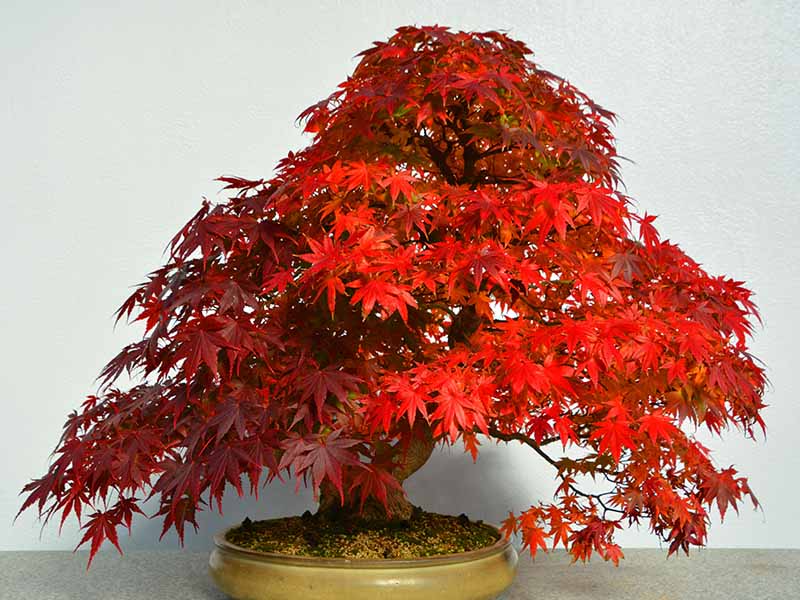
I think that goes double for Japanese maples – they’re so satisfying to watch as they awaken in the spring, flush with life in the summer, fade with a glorious last show in the fall, and sleep in the winter.
No doubt you know that bonsai is an art form that takes a lifetime to learn. No matter where you are on your journey, there’s always more to master.
Do you plan to start with a palmatum species? Which cultivar is calling your name? Do you have a favorite that we missed? Join the discussion in the comments below.
Want to expand your Japanese maple knowledge? You might find these guides useful:
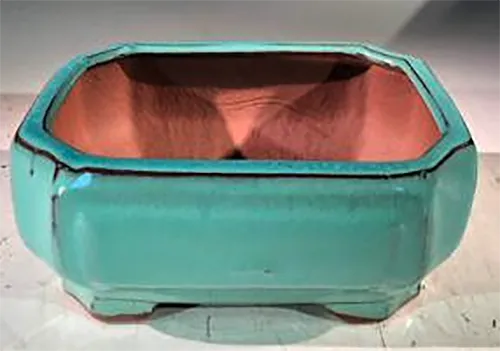

We have a red lace in the ground outside that I can take cuttings from. I’ll keep you posted! Great article by the way, very informative!
Awesome, good luck with the process! Keep us updated, and thanks for the kind comment.